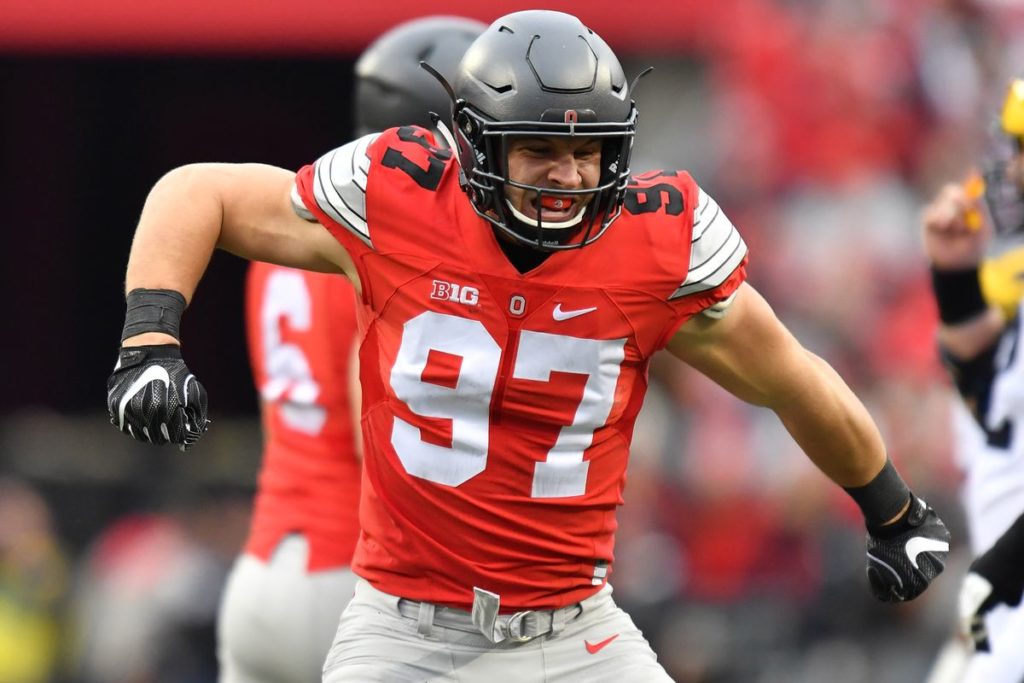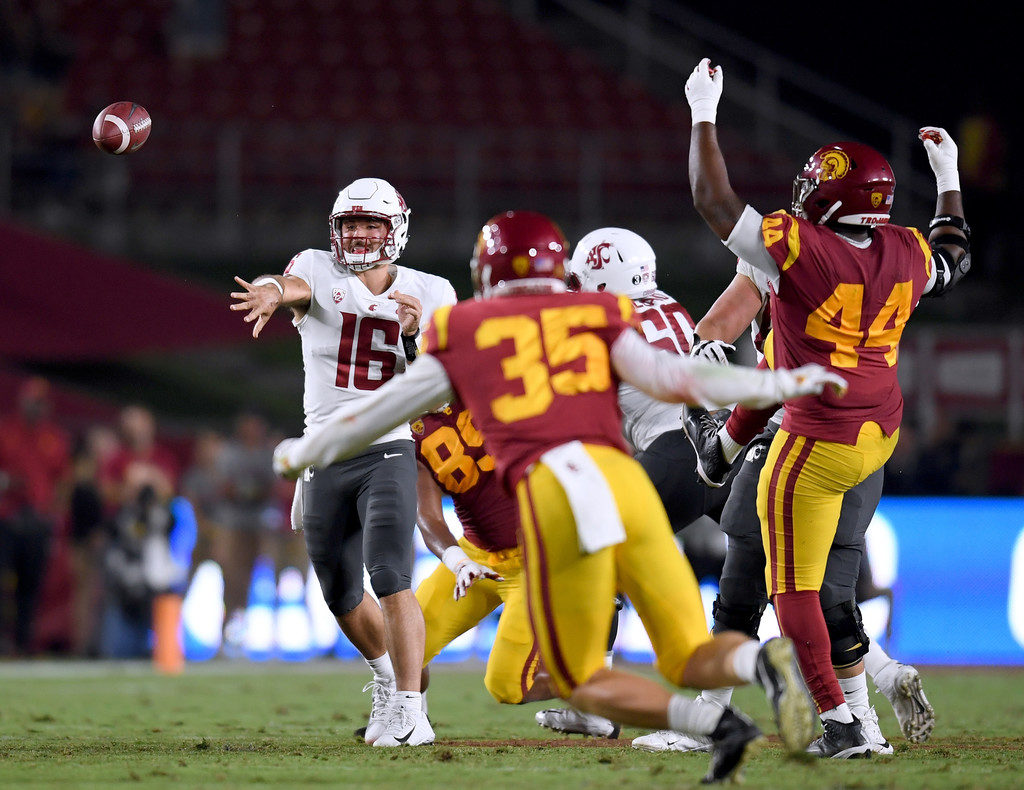How To Create And Use College Football Power Ratings To Beat The Point Spread
A few weeks ago I sent out an email/newsletter asking everyone “what do you guys want to see more of on the site and in the newsletter? Do you want more NFL & College Football betting information? What kind? More analysis, more stats, more tools, WHAT?”
I received a lot of great feedback, and I’ll try and answer everyone’s questions/suggestions in due course, but with the 2019 football season fast approaching, I thought one of the questions was particularly timely.
“Hey Pez – Id like to know how you guys create your own lines – what info do you look at etc?” – C. Topper
As many of you know I use my own set of College Football Power Ratings to determine a “fair” line, or point spread for each game.
This is typically where I begin my weekly handicapping process. If the point spread generated from my power ratings is off — or in some cases right on — from the point spread created by the oddsmakers, these are some of the games I will take a more in depth look at throughout the week.
HOW DO YOU CREATE POWER RATINGS?
Setting up your initial power ratings, or your base set of power ratings, is time consuming. However, once the process is completed, adjusting them throughout the season and revising them in subsequent years isn’t nearly as protracted.
Over the years (I didn’t do every team at once), I’ve literally placed a numerical value on every single position group and coaching staff of all 130 FBS schools.
I’m sure there are many, many …. MANY ways in which to create power ratings for each team. But the way I chose to do it was by breaking down each position group and grading them on a numerical scale.
I created my power ratings based on the following position groups:
Quarterback: 7-13
Offensive Line: 7-13
Running Backs: 4-10
Receivers: 4-10
Defensive Line: 7-14
Linebackers: 5-11
Secondary: 5-11
Special Teams: 5-10
Coaching: 5-10
So, based on my “initial” power ratings, the lowest possible number is 49 and the highest possible number is 102.
My thought process for arriving at these “base numbers” was/is as follows:
Several years ago I read an article — and it has been in multiple articles since — that stated the closer you are to the football, the more important the position/position group, and this year’s NFL Draft is a perfect example of that.
Nineteen players selected in the first round were either defensive linemen (13) or offensive linemen (6).
Receivers had 4 players selected, however, 2 of those players were TE’s who play along the line of scrimmage.
The secondary had 3 players selected as did the quarterback position. However, all three QBs were among the first 15 players selected, including the first player chosen overall.
There were 2 linebackers and 1 running back selected in the first round.
Therefore, the QB, OL & DL receive the highest PR grade(s) possible.
Next, because the offense has 4 positions groups and the defense only has 3 position groups, I have given each defensive position group higher possible PR grades. This still doesn’t make up for the 8-point discrepancy, however, I try and compensate for this by giving the punter, punt coverage, kicker and kickoff coverage extra weight in the special teams portion of the power ratings.
The main thing you want to do is come up with a number you feel reflects the teams strengths and weaknesses compared to other conference and FBS teams.
At this point I’ll usually compare my pre-season power numbers to other college football power ratings/rankings such as Sagarin, ESPN, Football Outsiders (S&P+) and also to what Phil Steele says in his magazine.
I do this mainly to see if I am “way off” on any particular team. If I am, I’ll re-evaluate that team to see where I may have overrated or underrated them.
ADJUSTING YOUR POWER RATINGS
Arriving at the most accurate pre-season number is important, especially early in the season when your number could be off – substantially – from what the market is offering.
When that happens, you need to check again and again your numbers so you can decide if your number appears to be accurate. Than you can decide whether or not to delve deeper into a particular game.
For example, as I write this, Auburn is a 3-point favorite over Oregon on a neutral field in week 1. I have Auburn as a 5.5-point favorite. That is a substantial edge, and I definitely will be considering Auburn in that match-up, especially if I can get a -2.5.
But I digress. Getting a good “base number” to start the season is important, but ultimately getting an accurate final number that closely lines up with the betting market is more important.
How one arrives at this number is a little more complicated and involves a lot of trial and error (and you lose/spend a lot of money), a lot of tweaking of your numbers and some good old fashioned intuition.
First things first, once the season starts, I do not internally adjust my rankings for each or any team’s position group. I just adjust for the overall power rating.
For example, last year I opened Washington State at 72 and that number was right on versus Wyoming in their opener (I had it at exactly -3.5, which was the number it closed at).
The Cougars won 41-19 and I adjusted them up 1 point (to 73) and I kept Wyoming the same.
Over the next two weeks I adjusted Wazzou up another 3-points.
In week # 4 they opened as 3.5-point dogs at USC. I had the game at USC -9 and I jumped all over the Trojans. The number closed at 4.5, so not only did I have a substantial perceived edge of +5.5 points (my number 9 minus the 3.5 opening line I bet the game at), but I also beat the closing line by 1 point.
USC won 39-36 in a game that was as close as the final score indicated. So where had I gone wrong?
Clearly I had underestimated Wazzou from the get go, and after watching that USC game it was clear that Gardner Minshew was a much better QB than I initially gave him credit for.
And even though I had adjusted the Cougars power rating on a weekly basis, I still hadn’t adjusted it enough, and lastly, despite this being the lowest rated USC team I had ever given a power ranking to, I still had them overrated.
However, I did not go into my Washington State power ratings and adjust the QB or RB ratings, nor did I go into my USC power ratings and adjust the RB or D-Line ratings. I just adjusted my overall power number for each team.
A few things to keep in mind when you are adjusting your numbers:
- As we always say here, don’t overreact to a one-game sample size. Your power numbers may have been dead on with the closing line, yet Team A crushes Team B and you think you need to make large adjustments to each team because of the final score. DON’T!
- Your number may have been off by several points from the closing line and you feel you need to adjust accordingly. In these cases I tend to proceed with caution, and if I do decide to make any adjustments, I do so conservatively.
Using that USC example from above, despite my numbers being off by 4.5 points from the closing line, I only adjusted my power number for each team by 1.5 points the following week (Wazzou +1.5, USC -1.5).
The following week my Washington State number was off by .5 points from the closing line and my USC number was off by 1.5. So, both were a lot more accurate than the week before (and both would have covered had we wagered them 😊).
- Remember, you’re trying to get your power number to align as closely as possible to the closing number. This means you are either accurately identifying potential +EV wagers, or if it is a game/team you really like and your number corresponds to the closing line, you know you’re not overpaying to wager on that team.
However, there are many reasons why the actual point spread may still vary from your numbers. Oddsmakers shade lines for different reasons. Public perception, over pricing favorites, etc.
Your power rating numbers are not only trying to give you an accurate “market number” but they are also trying to pinpoint differences in team talent and efficiencies between two teams.
SUMMARY
Hopefully this gives everyone an introductory idea of how to set-up power ratings and how to adjust them throughout the season.
Setting them up really isn’t that difficult, it’s just time consuming. Once you have a good power ratings “base” established for each team, it is much easier to adjust them at the beginning of each season.
Staying on top of them throughout the season and adjusting accordingly is something a little more subjective in order to achieve the most accurate numbers possible.
Lastly, I use my power ratings as my weekly starting point for handicapping college football games, and I’d say 25%-30% of my bet is based on them.
As I mention above, they let me know if I might be overpaying to make a wager on a particular team.
I’ll close with the most recent example available, Clemson v Alabama in last season’s National Championship game.
As most of you know I loved Clemson because they were the potential running dog with as good as, if not a better defense. Auto wager?
One last piece of the puzzle, my power rating for Alabama was 98 and my Clemson number was 94.5 … so Bama -3.5 on a neutral field.
I posted Clemson +6 in the Best Bets section several weeks before kickoff.
The game closed at Alabama -5.
So we beat the closing line (+EV), had a +EV wager based on my power numbers, had arguably the better defense getting points (+EV) – I say arguably because Bama had a helluva defense themselves — and we had the potential running dog (+EV).
I would say that was definitely a +EV wager. LOL!











One thought on “How To Create And Use College Football Power Ratings To Beat The Point Spread”